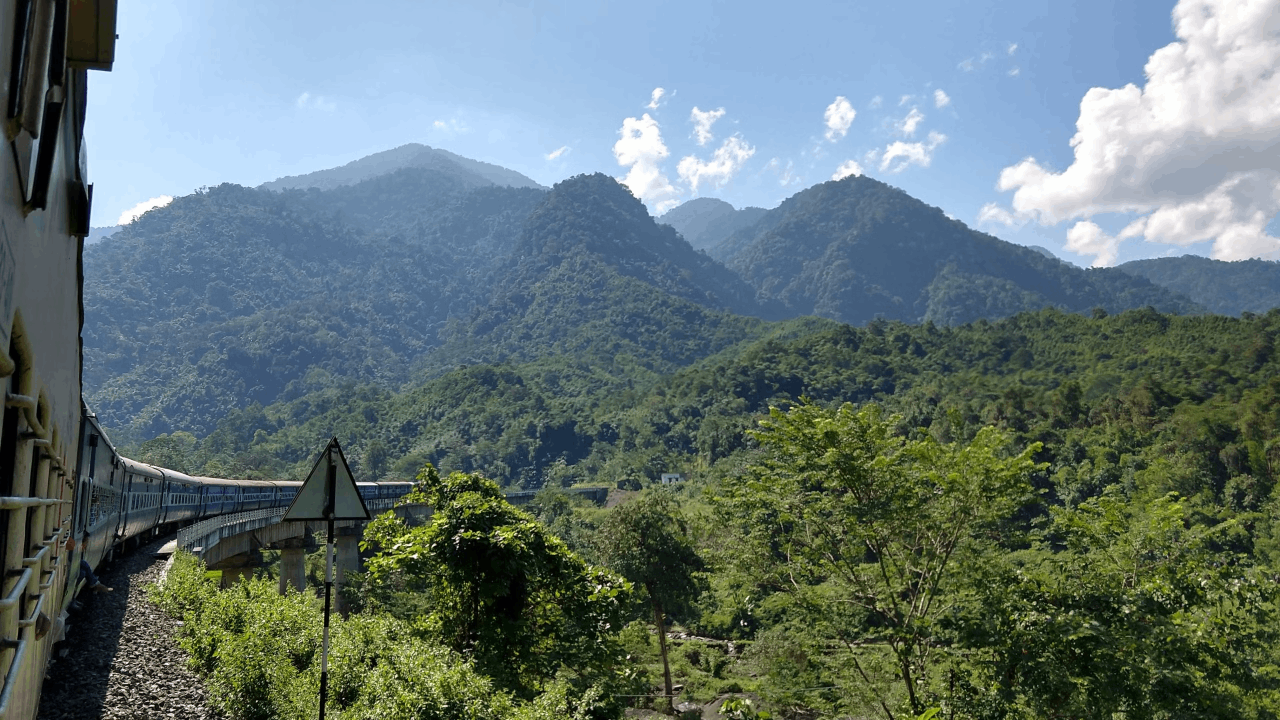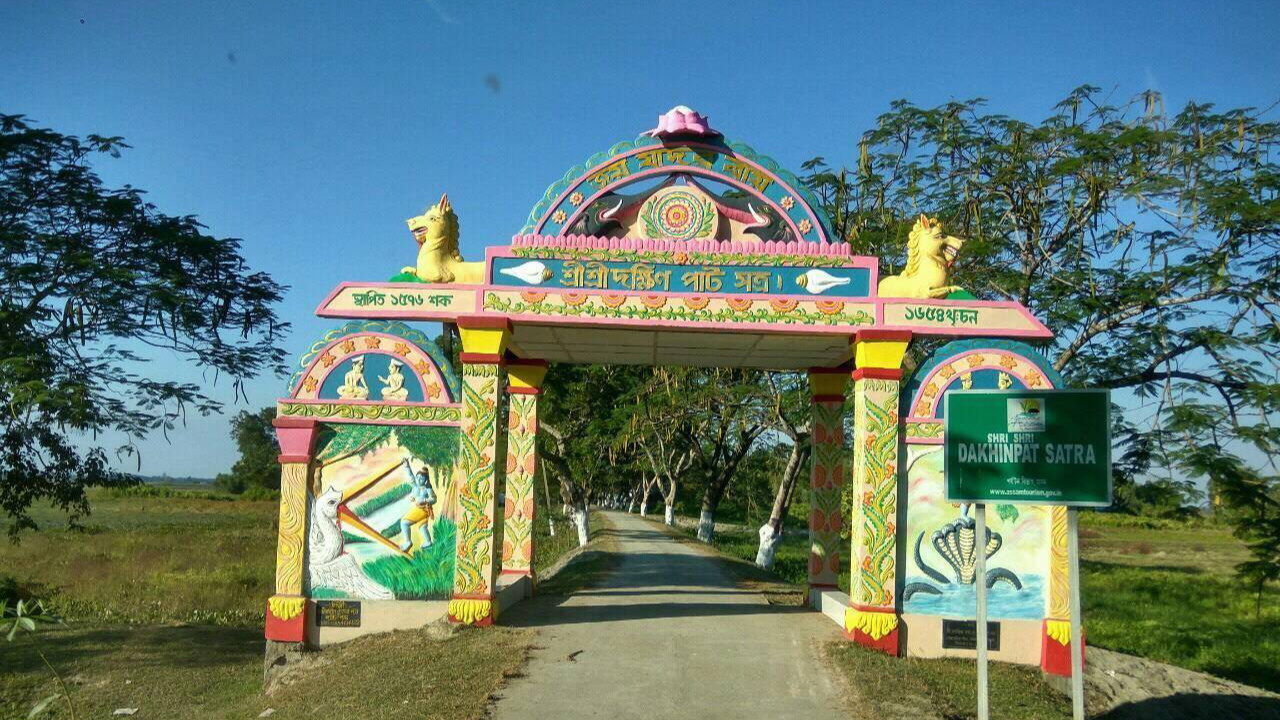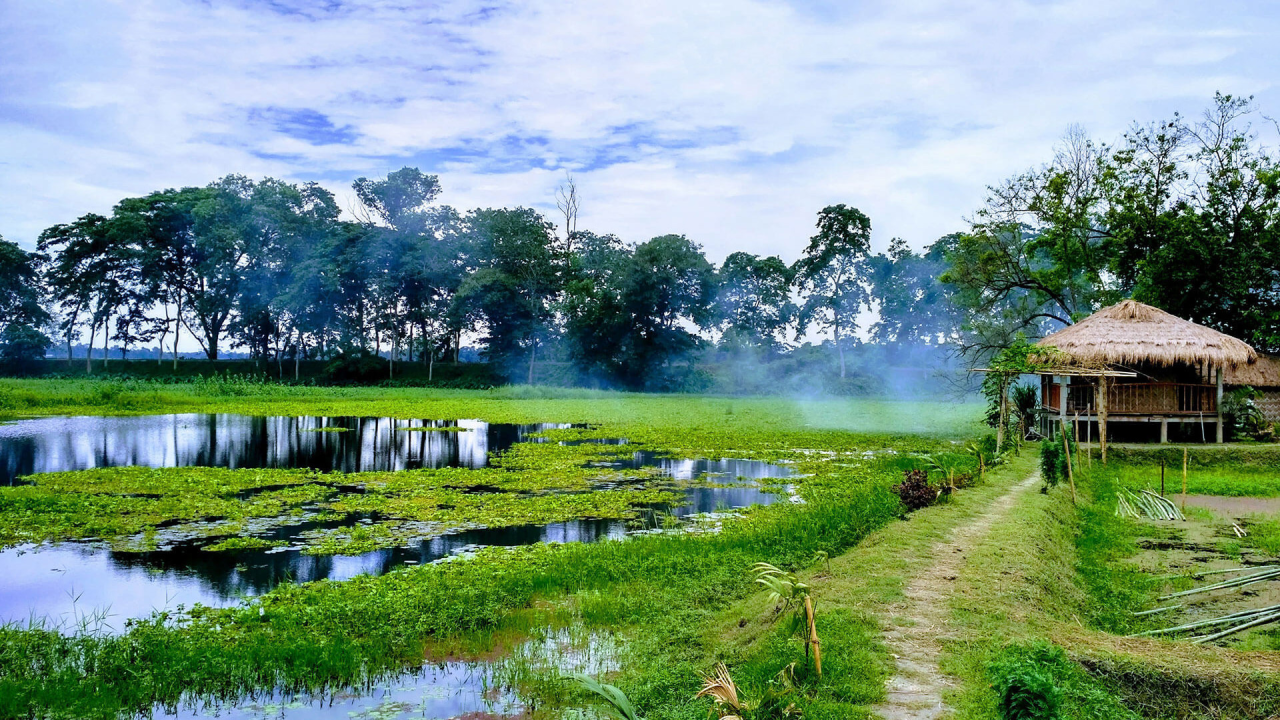Majuli has beauty and unique cultural heritage making it a strong contender for UNESCO's World Heritage Sites. Majuli possess a captivating diverse culture, making it the cultural capital of Assam.

Majuli is a beautiful and eco friendly freshwater Island located in the Brahmaputra river, is just 20 km away from the Jorhat city of Assam. Mojli has a world record of being world's largest river island with an total area of 1250 square kilometres and attracts tourist from all over the world. This serene beauty and unique cultural heritage of Majuli has made it a strong contender for UNESCO's world heritage sites.
Majuli has Bridge taking natural landscapes, beautiful lush greenery comma river and a diverse bird life. The visitors can experience the beauty of the island by enjoying boat rides in the Brahmaputra river, cycling along scenic trails, or relaxing on the river shore. The island also serves as a home to avoid variety of avian species including different types of migratory birds which visit the island during the winter months.
The island also offers a perfect surrounding for meditation, yoga and spiritual rejuvenation which makes this Island and ideal destination for those who seek Solace and inner peace. Majuli also offers unique cuisine which provides at taste of authentic Assamese flavor from the traditional dishes of Assam like the masor Tenga, aloo pitika and Khar. Traveles can also enjoy refreshing beverages like the apong which is a rice beer and enjoy local sweets made from jaggery and coconut. Tourist can enjoy the festivals at Majuli like the vibrant Raas festival which showcase is the glimpse of which traditions and cultural heritage of the Majuli Island.
Present in the island of Majuli Daknipat Satra is one of the most prominent Satras(monasteries) in the region, which has rich cultural and spiritual importance. This Satras was established in the 16 century by a saint and social reformer Shri Madhavadeva.
It is famous for its vibrant dance dramas which are called as Satya Nritya which showcase is the various mythological stories and spiritual themes. The Satras also houses ancient manuscripts artefacts and religious relics which offers inside into the rich cultural heritage of Majuli.

Garmur, present on the scenic island of Majuli in Assam which is a prominent cultural and historical hub. Garmur is famous for its ancient Satras (monasteries), such as the Auniati Satra, which showcases the traditional Assamese art forms of music, dance, and theater. Garmur also provides a tranquil ambiance, with serene surroundings which are perfect for meditation and spiritual retreats.
Kamalabari Satra, situated on the serene island of Majuli in Assam, is one of the significant Satras (monasteries) preserving the rich cultural heritage of the region. Built in the 16th century by Srimanta Shankardeva, who was a revered saint and social reformer, Kamalabari Satra is renowned for its contribution to Assamese neo-Vaishnavite culture. The Satra is a center for spiritual and artistic pursuits, where disciples engage in devotional activities, classical music, dance, and theater performances.
Present on the picturesque island of Majuli in Assam, Auniati Satra is a prominent and revered Satras (monasteries) in the region. Established in 1653 by Niranjan Pathakdeva, Auniati Satra has always been a center in preserving and propagating the rich cultural heritage of Assam.
The Satra is well known for its vibrant performances of traditional music, dance, and theater, depicting the unique artistic prowess of its residents. The Satra also houses ancient manuscripts, artifacts, and religious relics, providing insight into the rich history and spiritual significance of the region.

Samaguri Satra, located in the heart of Majuli which is a significant hub of Vaishnavite culture in Assam, India. Founded by the Vaishnavite saint Srimanta Sankardeva in the 15th century, this Satra or monastery is a prestigious institution committed to preserving and propagating Neo-Vaishnavism. Famous for its religious importance, the Samaguri Satra has the tradition of mask-making, an art form intrinsically linked to the dramatic practices of Ankiya Bhaona - traditional Assamese plays that narrate mythological stories.
The Mishing Village of Majuli, showcases the cultural and social heart of the Mishing tribe. The village has the unique lifestyle of the tribe, showcasing their stilt houses made of bamboo and cane to protect against floods. The village is famous for weaving skills, with traditional looms found in many households.
Molai Forest, present on the Majuli Island, is a forest Spanning over an area of about 1,360 acres, this forest was single-handedly planted by Jadav Payeng, who is an environmental activist and forestry worker. The region has a rich biodiversity, including numerous trees and plants, elephants, tigers, deer, and various species of birds.

Tengapania is a scenic Location on the banks of the Brahmaputra River in Majuli. Tengapania is famous for the golden temple known as 'Dhekiajuli Bor Namghar' where various religious activities are organized. The temple has a unique architectural style with intricate patterns and sculptures inspired by various cultures, reflecting a blend of Ahom and Assamese designs. Tengapania is an ideal place for tourists who are in search for serenity and a spiritual atmosphere.
The best time to visit Majuli is during the winter months from November to February. During this period, the weather is perfect for tourism as it is characterized by cool and pleasant temperatures ranging from 10°C to 25°C. Winter in Majuli also celebrates several festivals which showcase the culture of Assam, such as Raas Leela, held in November. The monsoons are avoided due to heavy rains and potential floods brought by the monsoons from June to September. In the summer months from March to May see higher temperatures that can make sightseeing uncomfortable during peak daytime hours.
Majuli is a wonderful island in Assam with a unique cultural heritage and stunning natural landscapes. Majuli is a strong contender for UNESCO's World Heritage Sites and offers a diverse range of tourist places, including monasteries, villages, forests, and temples. Majuli is amazing, serene and generally harmonious and is a travel heaven for every tourist. So, pack your bags and move on a journey to Majuli and create memories that will last a lifetime.